Related Research Articles

La traviata is an opera in three acts by Giuseppe Verdi set to an Italian libretto by Francesco Maria Piave. It is based on La Dame aux camélias (1852), a play by Alexandre Dumas fils, which he adapted from his own 1848 novel. The opera was originally titled Violetta, after the main character. It was first performed on 6 March 1853 at La Fenice opera house in Venice.
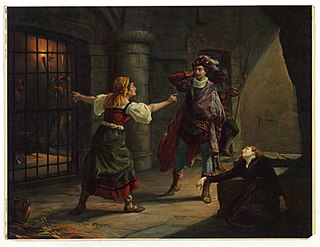
Il trovatore is an opera in four acts by Giuseppe Verdi to an Italian libretto largely written by Salvadore Cammarano, based on the play El trovador (1836) by Antonio García Gutiérrez. It was García Gutiérrez's most successful play, one which Verdi scholar Julian Budden describes as "a high flown, sprawling melodrama flamboyantly defiant of the Aristotelian unities, packed with all manner of fantastic and bizarre incident."

Rigoletto is an opera in three acts by Giuseppe Verdi. The Italian libretto was written by Francesco Maria Piave based on the 1832 play Le roi s'amuse by Victor Hugo. Despite serious initial problems with the Austrian censors who had control over northern Italian theatres at the time, the opera had a triumphant premiere at La Fenice in Venice on 11 March 1851.
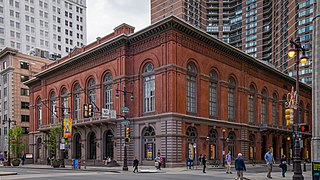
The Academy of Music, also known as American Academy of Music, is a concert hall and opera house located at 240 S. Broad Street in Philadelphia, Pennsylvania. Despite its name, the Academy has never contained a music school. It is located between Locust and Manning Streets in the Avenue of the Arts area of Center City.

The Academy of Music was a New York City opera house, located on the northeast corner of East 14th Street and Irving Place in Manhattan. The 4,000-seat hall opened on October 2, 1854. The review in The New York Times declared it to be an acoustical "triumph", but "In every other aspect ... a decided failure," complaining about the architecture, interior design and the closeness of the seating; although a follow-up several days later relented a bit, saying that the theater "looked more cheerful, and in every way more effective" than it had on opening night.

Louise Beatty Homer was an American operatic dramatic contralto who had an active international career in concert halls and opera houses from 1895 until her retirement in 1932.

Eliza Biscaccianti was an American operatic soprano from Boston, Massachusetts. Born Eliza Ostinelli, she was the daughter of pianist Sophia Hewitt Ostinelli, the only woman to have ever been employed as an organist and accompanist by Boston's Handel and Haydn Society and the second musician ever to perform the work of Beethoven in Boston, and Louis Ostinelli, a native of Italy who became a second violinist with, and later a conductor of, the Handel and Haydn Society. Her uncle was composer John Hill Hewitt and her grandfather was conductor, composer and music publisher James Hewitt.
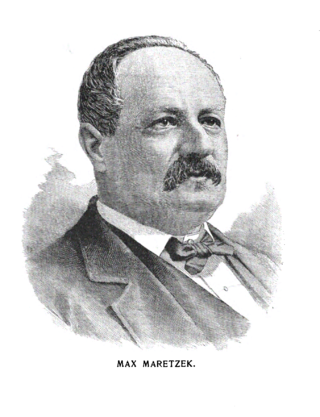
Max Maretzek was a Moravian-born composer, conductor, and impresario active in the United States and Latin America.
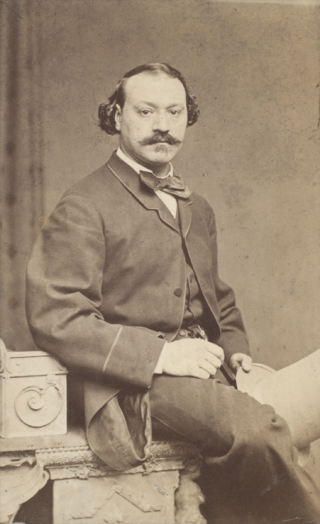
Francesco Graziani was an Italian baritone and voice teacher. Graziani has been called the first modern baritone because his vocal attributes were well suited to the high-lying operatic parts composed by Giuseppe Verdi, with whom he worked.

Carlo Baucardé or Boucardé (1825–1883) was an Italian operatic tenor who sang leading roles throughout Italy, as well as in London, Madrid, Paris, and New York. He is most remembered today for creating the role of Manrico in Verdi's opera Il trovatore and the title role in Donizetti's Poliuto.

Marietta Gazzaniga was an Italian operatic lyric - dramatic soprano.

Nadine Sierra is an American soprano. She is most well known for her interpretation of Gilda in Verdi's Rigoletto, and Lucia in Donizetti's Lucia di Lammermoor. Currently performing in leading roles in the top opera houses around the world, she received the 1st Prize and People's Choice Award 2013 at the Neue Stimmen competition, is the 2017 Richard Tucker Music Foundation Award Winner, and was awarded the Beverly Sills Artists Award in 2018. Her debut album on the Universal Music Group label, There's a Place for Us, was released on August 24, 2018.

Inez Fabbri, née Agnes Schmidt, was an Austrian American soprano, voice teacher and impresaria. She sang in Austria, Germany, England, South America and the Caribbean, making her home in San Francisco where, in the 1870s, she was the most important musical personality and prima donna assoluta of her time, performing in more than 150 concerts and operas from 1872 to 1879, producing operas, and teaching voice to up-and-coming singers.
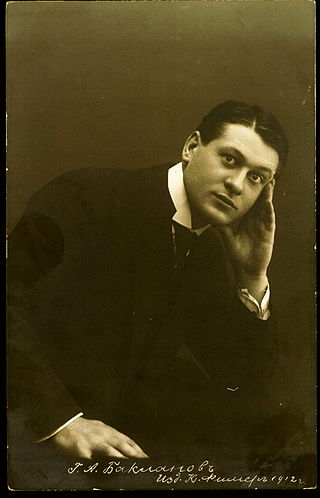
Georgy Andreyevich Baklanoff, known as Georges Baklanoff was a Russian operatic baritone who had an active international career from 1903 until his death in 1938. Possessing a powerful and flexible voice, he sang roles from a wide variety of musical periods and in many languages. He was also highly praised by audience and critics for his acting abilities.
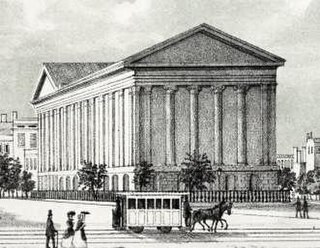
The Astor Opera House, also known as the Astor Place Opera House and later the Astor Place Theatre, was an opera house in Manhattan, New York City, located on Lafayette Street between Astor Place and East 8th Street. Designed by Isaiah Rogers, the theater was conceived by impresario Edward Fry, the brother of composer William Henry Fry, who managed the opera house during its entire history.

Teresa Parodi was an Italian operatic soprano who sang leading roles in Europe and in the United States where she achieved particular fame as the prima donna of both the Max Maretzek Italian Opera Company and the Max Strakosch Italian Opera Company. Admired for her acting ability and attractive stage presence as well as her voice, she was particularly known for her portrayals of the heroines in operas by Donizetti and Rossini.
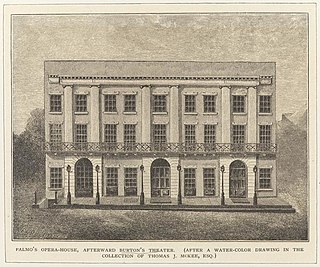
Palmo's Opera House was a 19th-century theatre in Manhattan, New York, that was located on Chambers Street between Broadway and Centre Street. It was one of the earliest opera houses in New York before it was converted into one of the earliest Broadway theatres. The theatre was conceived by Ferdinand Palmo, an Italian immigrant and successful restaurateur in New York City. It was located inside the former Stoppani's Arcade Baths building. Modest alteration to the building was done in 1843 to convert the building into a theater.
Alessandro Amodio was an Italian baritone who had an active international career as an opera singer from 1852 until his death from yellow fever nine years later in 1861. After making his debut at the Teatro di San Carlo at the age of 21, he spent the next four years performing roles at opera houses in Italy, including La Fenice in Venice, La Scala in Milan, the Teatro Goldoni in Livorno, and the Teatro del Giglio in Lucca. He first came to the United States in the late spring and summer of 1855 with the Max Maretzek Italian Opera Company with whom he portrayed Count di Luna in the United States premiere of Giuseppe Verdi's Il trovatore at the Academy of Music in New York City on May 2, 1855. After further performances in Venice, he was engaged by brothers Maurice and Max Strakosch to perform with their touring opera company in cities throughout the United States, including performances in New York, Chicago, and Philadelphia in 1856. He remained active as a performer in operas in cities throughout the United States and South and Central America for the next five years. He notably reprised the role of the Count di Luna on February 25, 1857 for the grand opening of the Academy of Music in Philadelphia.
Arthur Byron was an English tenor. From 1868 through 1872 he was active as a concert and opera singer in England, and from late 1872 through 1885 he appeared in opera houses in Italy. He also toured the United States with Max Strakosch and Clarence Hess's opera company in 1880-1881.
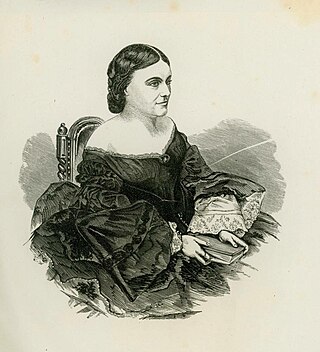
Lucy Escott was an American soprano and actor-manager who found success in her native country but who had an even greater success in Europe and the United Kingdom. She spent eight years in Australia with the opera company of W. S. Lyster.
References
- 1 2 Schonberg 1969 , p. 222
- 1 2 Martin 2011 , p. 81
- ↑ Preston 2001, p. 149.
- ↑ Brodsky Lawrence 1995, p. 4.
- ↑ Preston 2001, p. 152.
- 1 2 Martin 2011 , p. 146
- ↑ "Max Maretzek". Werner's Magazine. Vol. 19. Music Teachers National Association. 1897. p. 561.
- ↑ Brodsky Lawrence 1995, p. 3.
- ↑ Mathews 1897, p. 612–613.
- ↑ Brodsky Lawrence 1995, p. 314.
- ↑ Martin 2011, p. 184.
- ↑ Newman 2010, p. 75.
- ↑ Wilson 1968, pp. 118–125.
- ↑ Preston 2001, pp. 195–208.
- ↑ Preston 2001, p. 167.
- ↑ Martin 2011, p. 350.
- ↑ Thompson & Slonimsky 1956, p. 6.
- ↑ "The Philadelphia Academy of Music". The New York Times . March 26, 1857.
- ↑ Martin 2011, pp. 202–206.
- ↑ Bacon & Herndon 1896, p. 156.
- ↑ Brodsky Lawrence 1995, p. 695.
- ↑ George Lascelles (1956). "Opera in 19th Century America". Opera . Vol. 7. p. 343.
- ↑ Newman 2010, p. 35.
- ↑ John H. Baron (2013). Concert Life in Nineteenth-Century New Orleans: A Comprehensive Reference. Louisiana State University Press. ISBN 9780807150849.
Sources
- Bacon, Edwin M.; Herndon, Richard, eds. (1896). "Marshall, Wyzeman". Men of Progress: One Thousand Biographical Sketches and Portraits of Leaders in Business and Professional Life in the Commonwealth of Massachusetts. New England Magazine. p. 156 – via Internet Archive.
Boston Theatre Max Maretzek.
- Brodsky Lawrence, Vera (1995). Strong on Music: The New York Music Scene in the Days of George Templeton. University of Chicago Press. ISBN 9780226470115.
- Mathews, W. S. B. (1897). Music: A Monthly Magazine, Devoted to the Art, Science, Technic and Literature of Music. Vol. 12. pp. 612–613.
- Martin, George Whitney (2011). Verdi in America: Oberto Through Rigoletto. University Rochester Press. ISBN 9781580463881.
- Newman, Nancy (2010). Good Music for a Free People: The Germania Musical Society in Nineteenth-century America. University Rochester Press. ISBN 9781580463454.
- Preston, Katherine K. (2001). Opera on the Road: Traveling Opera Troupes in the United States, 1825–60. University of Illinois Press. ISBN 9780252070020.
- Schonberg, Harold C. (November 23, 1969). "Even the Prima Donna Blushed'" (PDF). The New York Times .
- Thompson, Oscar; Slonimsky, Nicolas (1956). The International Cyclopedia of Music and Musicians. Dodd, Mead & Co.
- Wilson, Arthur Herman (1968). A History of the Philadelphia Theatre, 1835 to 1855. Greenwood Press.